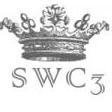Eviews Regression on VHL
I recently took a class called econometrics where I learned how to use a program called Eviews to run a regression analysis on a large set of data. For example, I wrote my final paper on how NFL spending on each individual position impacted regular season wins. I decided to apply the same concept to the VHL, because I wanted to see how well upgrading each attribute could predict regular season statistics. If you want a quick summary because you are too lazy to read the whole thing, just go to the conclusion at the end.
Background
I used the data from the latest season, S63, using end of season attributes and statistics from all 72 games. Admittedly, this isn't a perfect way to do it because I don't account for players upgrading their attributes from season start to end, but there is no better way to run the regression that I can think of. For consistency, anyone who didn't play in 72 games was excluded from the study, but this only resulted in two bots being excluded so that cutoff worked out well. In looking at player attributes, I decided to take out endurance, confidence, durability, potential, morale, and overall because they do not apply.
Goals (And Summary on how to read these tables)
In this table, C is the constant, and all the other variables are player attributes, like ck = checking or sk = skating
As an example of interpreting these coefficients, a one tpe increase in scoring will result in an additional 0.414 goals scored in a 72-game season. So if a player has 99 scoring and 0 in all other attributes, their expected goals would be -15.51 (the constant) + (0.414*99) = 25.5. Some coefficients are negative like passing being -0.17, meaning a one tpe increase in passing results in -0.17 expected goals scored, which would be expected because a player who passes more shoots less and scores less goals.
My first regression looked at how player attributes predict goals over a 72 game season. The adjusted R squared is 0.81, meaning 81% of the variation in the dependent variable, goals, is explained by the variation in the independent variables, which are all the different player attributes. This is a pretty good adjusted R squared and higher than I was expecting, so this data is meaningful. In finding which variables are statistically significant, you want to look at the probability column, and find which ones are significant at least at the 10% level, but ideally should be significant at 5% or 1%. In the case of goals scored, scoring and passing are significant at the 1% level, penalty shots, puck handling, and experience are significant at the 5% level, and leadership is significant at the 10% level. According to this regression, if you solely want your player to score goals and care about nothing else, you should solely focus on putting your tpe into the scoring and puck handling attributes, as they have the best combination of highest coefficient and are statistically significant. I somewhat doubt the validity of experience being correlated to goal scoring, because players with high experience tend to have high levels of tpe in general because they are older players.
Assists
Assists also had a high-ish adjusted R squared at 0.84, so I think this data is useful. For assists, puck handling is significant at the 1% level, defense is significant at the 5% level, and penalty shots are significant at the 10% level. I find this very interesting because one would think that passing is the most important stat in racking up assists, but that does not appear to be the case at all, as passing is not statistically significant and doesn't even have a very strong coefficient! Puck Handling is the most significant and has the strongest co-efficient, which leads me to believe that this stat is way more important than most people believe. Defense makes sense in generating assists as it probably helps win puck battles and bring play the other way. I'm not sure how penalty shots got such a high correlation, but I'm just going to assume that people who points into penalty shots probably just have super high tpe in general, so I am discounting that. I wonder if instead of most assists coming from a pass, they come from a shot that creates a rebound or deflection, or a pass from someone using their skills to move into a higher danger scoring chance area, instead of the actual pass itself.
Points
Points has a high adjusted R squared of 0.88 which means this data is useful. For points puck handling is significant at the 1% level, and scoring is significant at the 5% level. It appears that puck handling and scoring are by far the two most important attributes for total points in a season, as they are both statistically significant and have the highest positive coefficients. Discipline and fighting unsurprisingly have a negative correlation to points, as you are just wasting tpe putting your points into those. I think it's really odd that passing and skating have a negative coefficient as that means putting tpe into that decreases your total points, though the statistical significance is low. Maybe that is just suggesting you should put your tpe into other areas rather than those ones. Defense also has a high coefficient, and maybe it makes some sense putting some leftover tpe into there to score more points as well.
Conclusion
Conventional wisdom around the VHL has always seemed to suggest that skating is the most important secondary attribute, and one of the most important attributes overall. My findings here completely debunk that myth, as the numbers show that skating is statistically insignificant and has a low correlation to scoring goals, assists, or points. Instead, puck handling is the most important attribute for scoring points, followed by scoring. If you want to focus only on setting up your teammates with assists, put your tpe into puck handling and defense. Putting tpe into passing surprisingly does not help you earn more assists! Please let me know your thoughts on this, as there are so many other areas I can explore in future media spots. What attributes create the most hits, the highest shooting percentage, the most blocked shots, or the best save percentage for goalies? There are so many great ideas for future articles I am excited to do.
1,073 words - to be used for 2 weeks, to be used weeks ending 12/30 and 1/6


.thumb.jpg.c5de175b6a198da1b4fc71d8573d9ba0.jpg)


 2
2
.png.ed69a7260a477fcf4feead7a0e4b7506.png)







.thumb.jpg.c5de175b6a198da1b4fc71d8573d9ba0.jpg)